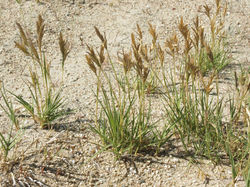top of page
CioC
Colors, colors, colors! Look at all of the beautiful colors that a marsh has.
Hayyy!! Today I'm following the journal to Tillinghast Farm in Barrington. Did you know that Tillinghast is not only a farm but also a beach and marshland? Let's see the artwork the explorers created that can teach us about wetland plants.


Tillinghast
 Salt Meadow HaySpartina patens is the close relative to the smooth cordgrass. It is much shorter, and found just above it in the lower elevations of the salt marsh. It is a hero of pollution filtration, and takes its common name from the fact that early settlers would use it to feed their cows and horses! |  SaltgrassDistichlis spicata sounds like a Harry Potter spell! With just a swish and a flick it’ll work its magic to feed your cattle! Seriously, it's often found mixed in with salt meadow hay, and because of its adaptation to salty environments, it will stay green and edible even when the land grasses have dried up in a drought. |  Groundsel TreeBaccharis halimifolia is a fall-flowering shrub or small tree found in the higher elevations of salty coastal marshes and blooms into white, cotton-like flowers. |
|---|---|---|
 Smooth cordgrassSpartina alterniflora is a low salt marsh plant found at the very edges the water, having great tolerance for a wide range of salinities and can stand being underwater at every high tide. It's an important food and habitat resource for the ecosystem, as well as dampening wave action to protect coastal areas from erosion. |  Reed GrassThis invasive species, Phragmites australis, has outcompeted other native plants by growing in dense clusters at higher elevations blocking the light for other important plants in the marsh and lowering the biodiversity. It traps sediment, leading to formation of more upland habitat, and creating a barrier to the marsh migrating landward as sea levels rise. It came over from Europe, where it is used as a roofing material (it's the thatch of thatched cottages!) |  Marsh ElderIva frutescens is a high-tide bush or shrub that is tolerant of salinity but not of flooding and forms long bands in the upper part of the marsh. |
 Sea LavenderThis low salt marsh plant, Limonium spp., isn't related to the lavender we find on land, but has delicate purple flowers that are popular for floral arrangements. |  Marsh PlantsThe plant Spartina alterniflora caked in sea lettuce |  Marsh BedThousands of fiddler crab holes eroding the marsh bed soil |
 Fiddler CrabHiding in the tall grasses of the marsh bed |  Ribbed MusselsRibbed mussels rooting themselves in the marsh bed |  Sea LettuceDried sea lettuce on the marsh bed |

It's easy as...
1. Save this image
2. Print it out on 8.5"x11" paper
3. Color it in!

An ecotone is where two different environmental communities or biomes come together. In this case, the marsh is where the water and land meet. Plants are a key feature in identifying change along the ecotone. In this picture color defines different species' placement within a marsh.

Try it with me!!
 |
|---|
 |
 |
 |
 |
 |

I colored the blue in!


Discover
Explore
Dive In
bottom of page
